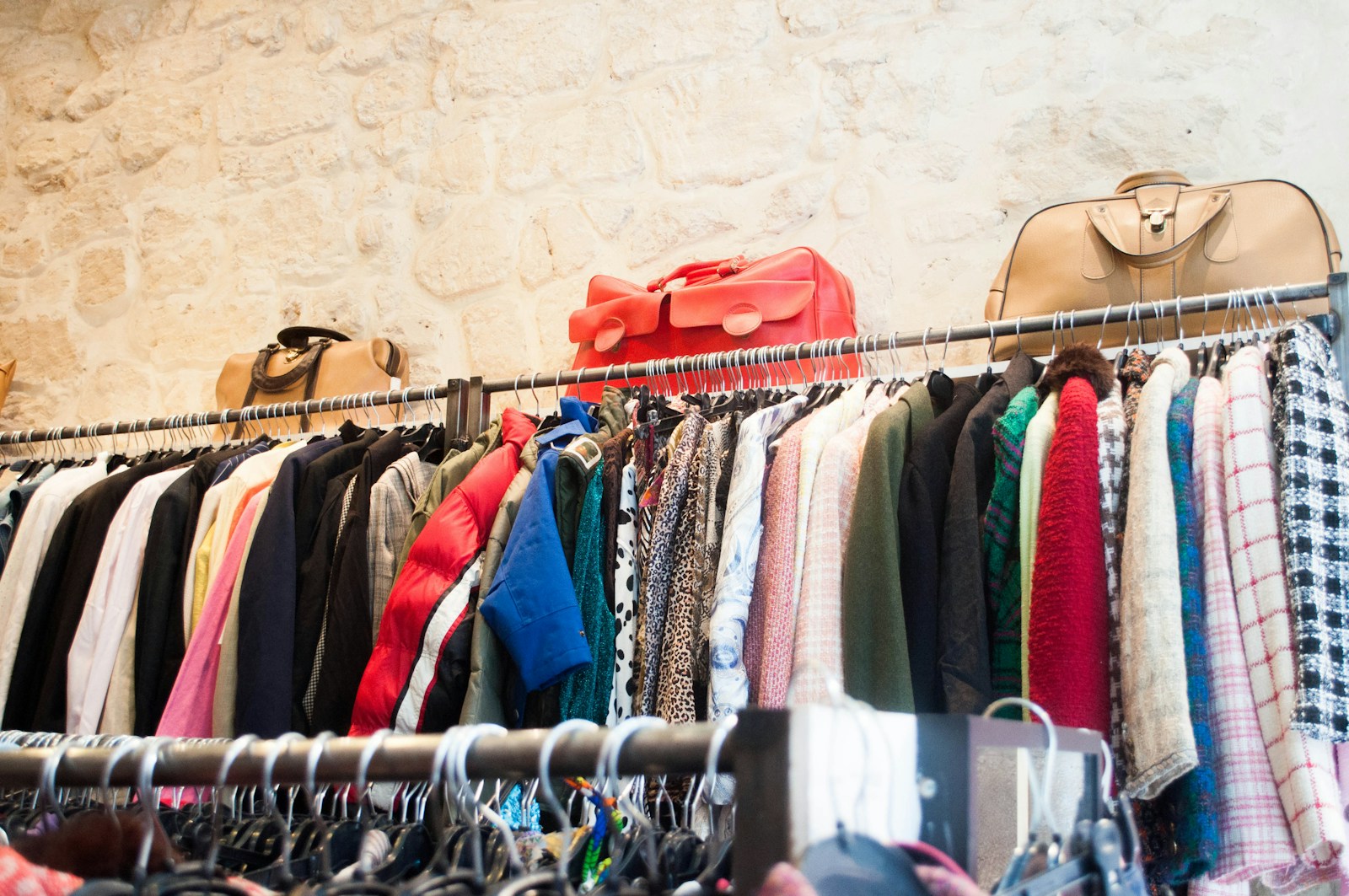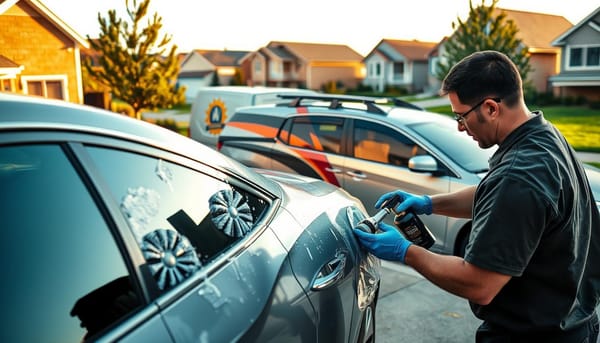Vintage Thrifting Tips From a Pro: How to Find Deals and Valuable Items

Did you know that the global secondhand clothing market is predicted to reach a whopping $64 billion by 2024? Dive into the world of vintage thrifting, where unique finds blend with eco-conscious choices. Discover how this trend adds flair to your wardrobe and reduces fashion waste. Unearth timeless pieces and one-of-a-kind treasures while embracing a sustainable approach to style. Join the movement that celebrates individuality and sustainability through the art of vintage thrifting.
Strategic Thrifting Planning
Budgeting
Create a thrifting budget tailored to your wardrobe needs and style preferences. Determine how much you can allocate for thrifting per month.
Thrift stores offer a wide selection of items at affordable prices, making it crucial to set a budget to avoid overspending. Consider allocating more funds for key pieces or seasonal updates.
Research
Explore local thrift stores to find the ones that cater to your style and offer unique finds. Look for stores known for specific items, such as vintage tee shirt racks or rare accessories.
You can uncover hidden gems and understand each store's specialties by researching different thrift stores. This knowledge will help you prioritize which stores to visit first based on your desired items.
Prioritization
Develop a prioritized list of items you want to add to your wardrobe. Whether finding a statement coat for the upcoming season or adding versatile basics, having a clear list will streamline your thrifting experience.
Prioritizing items allows you to focus on what is most important, ensuring that you make the most out of your thrifting trips without getting overwhelmed by the vast array of options.

Identifying Essential Finds
Differentiation Tips
Learn the distinction between vintage and retro pieces to enhance your treasure hunt when thrifting. Vintage refers to items from a previous era, while retro items are modern imitations of past styles.
Popular Brands
Familiarize yourself with renowned vintage brands like Levi's or Chanel to identify their unique characteristics. Recognizing these key features will help you spot authentic pieces during your next treasure hunt.
Elevating Outfits
Look out for rare finds such as statement jewelry, scarves, or handbags that can add flair to your outfits. These accessories are the key to creating a distinctive and personalized style.
Assessing Item Conditions
Signs of Wear
Always check for signs of wear when assessing vintage items, such as fading, pilling, or loose threads. These indicate the item's condition and longevity.
Quality Inspection
Inspect the quality of the materials used to construct the item. Look for durable fabrics, sturdy stitching, and intact fastenings to ensure a good-condition purchase.
Overall Evaluation
Before making a decision, evaluate the garment or accessory's overall condition. Use a tape measure to confirm sizing accuracy and check for hidden damages or defects.
Avoiding Counterfeit Items
Verify Authenticity
When vintage thrifting, ensure authenticity by examining labels, tags, and stitching details. Look for specific markings that indicate genuine pieces.
Research Indicators
Research common counterfeit indicators for popular vintage items. Stay informed about typical signs of replicas to make informed purchasing decisions.
Trust Your Instincts
Trust your instincts while vintage thrifting. If a deal seems too good to be true, it probably is. Avoid falling for unrealistically low prices on quality goods.
Repairing Salvageable Vintage Finds
Sewing Techniques
Learn basic sewing techniques to mend minor damages on vintage clothing. You can easily fix small tears or loose seams with a needle and thread. This skill is essential for preserving the authenticity of your vintage pieces.
DIY Restoration
Explore DIY methods for restoring tarnished jewelry or accessories. Use gentle cleaning solutions and soft cloths to remove dirt and grime without causing further damage. This hands-on approach can bring back the shine to your vintage treasures.
Professional Assistance
Seek professional help for intricate repairs or restoration projects. Consulting experts ensure proper care and preservation for valuable items like antique dishes or delicate decor. Experienced professionals can effectively tackle stubborn stains, water spots, or tape residue.

Mastering Bargaining Techniques
Confident Negotiation
Practice confident negotiation skills to secure the best deals when vintage thrifting. Approach sellers with a firm but friendly demeanor to show your interest in their items. Remember, sellers appreciate buyers who know the value of what they are purchasing.
Respectful Communication
Be respectful and courteous when discussing prices with sellers. Avoid being overly aggressive or pushy, which can lead to unsuccessful negotiations. Express your interest in the item and inquire about the possibility of a discount politely.
Bundle Deals
Utilize bulk buying or bundle deals to maximize your savings during vintage thrifting sessions. Sellers are often willing to offer discounts when purchasing multiple items at once. This strategy not only helps you save money but also allows you to acquire various vintage pieces in one go.
Building a Thrifting Community
Attend Events
Engage with local thrifting events to meet fellow vintage enthusiasts and expand your network. Discover unique pieces and share tips on finding hidden gems.
Join Groups
Join online forums or social media groups focused on vintage thrifting to connect with like-minded individuals, exchange knowledge, discuss trends, and build relationships within the community.
Share Experiences
Share your thrifting finds and experiences to inspire others. Post photos of your treasures, provide insights on where to shop, and advise on spotting valuable items.
Financial Strategies in Thrifting
Monthly Budget
Set a monthly thrifting budget to manage expenses effectively. Limiting your spending can help you prioritize essential purchases and avoid overspending on unnecessary items. By allocating a specific amount for thrifting each month, you can control your finances and make more intentional buying decisions.
Seasonal Sales
Take advantage of thrift store seasonal sales or discount days to maximize your savings. Many thrift stores offer special promotions during holidays or change of seasons, allowing you to find quality vintage items at lower prices. Watch for these sales events to score great deals on unique pieces.
Selling and Trading
Consider selling or trading items you no longer need to finance new vintage purchases. Clearing out your closet declutters your space and provides extra funds for expanding your vintage collection. Platforms like online marketplaces or local swap meets offer opportunities to exchange preloved items for cash or other treasures.
Final Remarks
You've now mastered the art of vintage thrifting from strategic planning to financial strategies. By identifying essential finds, assessing item conditions, avoiding counterfeits, repairing salvageable items, mastering bargaining techniques, and building a community, you're well-equipped for successful thrift shopping. Remember, every find has a story and a potential treasure waiting to be discovered. Keep honing your skills, exploring new stores, and sharing your passion with others. Thrifting isn't just about finding unique pieces; it's about sustainability, creativity, and community.
Now that you're armed with knowledge and skills head out into the world of vintage treasures. Embrace the thrill of the hunt, trust your instincts, and enjoy the journey of uncovering hidden gems. Happy thrifting!
Frequently Asked Questions
Is vintage thrifting a cost-effective way to build a unique wardrobe?
Vintage thrifting is a budget-friendly option for discovering one-of-a-kind pieces at affordable prices. It allows you to create a distinctive style without breaking the bank. It's a sustainable and economical approach to fashion.
How can I identify valuable vintage items while thrifting?
Look for quality materials, unique details, and well-preserved pieces from past eras. Research popular vintage brands or styles beforehand to recognize valuable finds. Pay attention to craftsmanship and labels for authenticity.
What are the benefits of repairing salvageable vintage items?
Repairing salvageable vintage items restores their beauty and adds character to your collection. It allows you to own and wear unique pieces with a story behind them, contributing to sustainable fashion practices.
How can I avoid purchasing counterfeit vintage items?
To avoid counterfeit items, educate yourself on authenticating techniques specific to the era or brand you're interested in. Check for quality markers, such as stitching, labels, and materials. Buying from reputable sellers or stores can also reduce the risk.
Why is building a thrifting community important in the world of vintage shopping?
Building a thrifting community provides opportunities for sharing knowledge, tips, and resources with like-minded individuals. It fosters a supportive environment for enthusiasts to connect, learn from each other's experiences, and discover hidden gems together.
Gigs Money Tips
Financial Planning tips for Gig Economy Workers.




